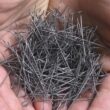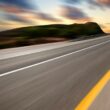When it comes to construction materials, few can rival the versatility and robustness of concrete. However, traditional concrete falls short when exposed to scorching temperatures, leading to thermal cracking and structural degradation. Recognizing this challenge, engineers and researchers have developed a groundbreaking solution: heat resistance concrete.
This specialized variant is engineered to withstand elevated temperatures without compromising its integrity. Join us in this comprehensive exploration of heat resistance concrete, where we will delve into its unique composition, exceptional properties, meticulous manufacturing process, wide-ranging applications, undeniable advantages, and important limitations.
Additionally, we will discuss testing and quality control measures, the significance of maintenance and repairs, cost considerations, future developments, and the environmental impact of this revolutionary construction material.

Composition of Heat Resistance Concrete: Forging a Formula of Strength
At the heart of heat resistance concrete lies a carefully crafted composition of aggregates, binder materials, and additives, all designed to fortify its ability to endure extreme temperatures.
Unveiling the Aggregates
Aggregates employed in heat resistance concrete are meticulously chosen for their unparalleled resistance to thermal expansion and robust strength even under blistering heat. These encompass lightweight aggregates such as expanded clay or shale, as well as specialized aggregates like alumina, silica, or chromite, each contributing unique qualities to the final product.
The Binding Agents that Defy Heat
Binder materials in heat resistance concrete play a pivotal role in lending cohesiveness and strength to the mixture. A variety of binders can be employed, including Portland cement, calcium aluminate cement, and refractory cements, all renowned for their capacity to withstand high temperatures and safeguard against structural degradation.
Also Read: Is crushed Concrete Better than a gravel driveway?
Empowering Additives and Admixtures
Additives and admixtures are seamlessly integrated into heat resistance concrete, augmenting specific properties essential for withstanding extreme heat. The inclusion of fibers, such as steel or polypropylene fibers, bolsters crack resistance and reduces the risk of spalling. Moreover, chemical admixtures are introduced to enhance workability, minimize water content, and elevate resistance to high temperatures.
Also Read: Workability of Concrete is directly proportional to?
Like Us on Facebook!
Properties of Heat Resistance Concrete: Conquering the Fiery Trials
Heat resistance concrete boasts a remarkable array of properties that render it ideal for deployment in high-temperature environments.
Subscribe Us on YouTube!
Unyielding High-Temperature Resistance
The foremost characteristic of heat resistance concrete lies in its remarkable ability to withstand elevated temperatures without succumbing to structural deterioration. It stands tall against blistering heat, preserving its strength and integrity with unwavering resolve.
Harnessing the Power of Thermal Conductivity
Heat resistance concrete showcases a low thermal conductivity, thus providing exceptional insulation against the relentless march of heat. This invaluable property effectively mitigates heat transfer, bolstering temperature stability and minimizing energy loss or gain.
Also Read: All You Need To Know About External Wall Insulation
Uncompromising Mechanical Strength
While defying high temperatures, heat resistance concrete maintains its mechanical strength, ensuring steadfast load-bearing capacity and unwavering structural integrity. This steadfastness is crucial for enduring durability even amidst the most taxing thermal conditions.
The Armor of Durability
Heat resistance concrete stands tall as a paragon of durability. It exhibits resilience against thermal cycling, the repetitive heating and cooling prevalent in high-temperature environments. This resilience effectively minimizes the potential for thermal cracking and spalling, thereby ensuring an extended lifespan for structures fortified with this extraordinary material.
Manufacturing Process: Forging the Crucible of Endurance
The manufacturing process of heat resistance concrete mandates the meticulous proportioning of materials, precise mixing techniques, and appropriate curing methods.
The Art of Proportioning Materials
Proportioning aggregates, binder materials, and additives represents a pivotal step in achieving the desired properties of heat resistance concrete. The exact proportions may vary depending on the specific application and the required performance. Attaining the optimal balance between heat resistance, strength, and workability stands paramount.
Also Read: How To Clean Concrete with TSP – Trisodium Phosphate?
Harmony Through Mixing Techniques
During the mixing process, harmonious blending of all components emerges as an imperative requisite for achieving a homogeneous mixture. Mixing techniques, ranging from high-shear mixers to specialized refractory mixers, ensure the uniform distribution of aggregates and binders, an indispensable aspect of the manufacturing process.
Curing Methods: Kindling the Flame of Endurance
Proper curing fuels the development of strength and durability within heat resistance concrete. Moist curing, steam curing, or heat curing methods are employed, tailored to meet the specific requirements of the concrete mix. The curing process serves as a crucible, allowing the concrete to unlock its full heat resistance properties and bolstering its long-term performance.
Also Read: Non-Destructive Testing on Concrete – NDT – (Different Types)
Applications of Heat Resistance Concrete: Forging Unbreakable Bonds
Heat resistance concrete finds itself at the forefront of numerous applications where exposure to high temperatures assumes critical significance. Its versatile nature has enabled its utilization in a diverse range of scenarios.
Unleashing the Power in Furnaces and Kilns
Heat resistance concrete serves as the bedrock for constructing furnaces and kilns, fortified bastions designed to withstand extreme temperatures. Its formidable resistance to heat allows it to shield the structure from the intense thermal onslaught during operations.
Scaling New Heights with Chimneys and Flue Liners
Chimneys and flue liners demand materials that can withstand searing temperatures and the corrosive gases produced during combustion processes. Heat resistance concrete rises to the occasion, offering exemplary heat insulation and resolute resistance against chemical erosion. This makes it an unrivaled choice for such critical applications.
Industrial Processes at the Pinnacle of Heat
Industries like steel manufacturing, glass production, and petrochemical processing rely on heat resistance concrete to erect equipment and structures that dare to confront extreme temperatures head-on. This revolutionary material safeguards the safety and longevity of these installations, proving its mettle in the harshest thermal environments.
Advantages and Limitations: A Balancing Act
Heat resistance concrete offers a multitude of advantages over its traditional counterpart when confronting high-temperature environments. However, it is not without its limitations.
Unleashing the Power of Enhanced Thermal Stability
Heat resistance concrete surpasses the limitations of traditional concrete, flourishing in temperatures far exceeding the latter’s threshold. Its ability to retain strength and integrity in the face of blazing heat makes it the embodiment of resilience, ideal for applications bearing the brunt of thermal stress.
Fortifying Structures with Enhanced Insulation
Boasting low thermal conductivity, heat resistance concrete emerges as a formidable shield against the relentless onslaught of heat transfer. This invaluable characteristic maintains a stable internal temperature, reduces energy consumption, and engenders an environment of unparalleled comfort in structures exposed to scorching temperatures.
Also Read: How to get burn marks off Concrete? (Simple 5 steps)
Unyielding Durability: The Essence of Reliability
Withstanding the ravages of thermal cycling and flaunting superior mechanical strength, heat resistance concrete stands tall as an embodiment of durability in the harshest of environments. Its ability to brave repeated exposure to extreme heat without succumbing to significant degradation elevates its stature, ensuring longevity and steadfastness.
However, heat resistance concrete does come with certain limitations and considerations that warrant attention:
The Price of Exceptionalism
Compared to traditional concrete, heat resistance concrete can carry a higher price tag. This can be attributed to the specialized materials and intricate manufacturing processes involved. When considering the use of heat resistance concrete, a comprehensive cost analysis becomes crucial, accounting for long-term benefits, reduced maintenance, and prolonged lifespan.
A Symphony of Expertise
The installation of heat resistance concrete necessitates the expertise of skilled laborers well-versed in the nuances of working with this unique material. Proper installation is of paramount importance, ensuring optimal performance and longevity. Engaging experienced professionals familiar with the handling and application of heat resistance concrete becomes imperative.
The Quest for Availability
Heat resistance concrete may not be readily available in all regions or from all suppliers. Its production and availability might be limited, demanding meticulous planning and coordination for projects requiring its deployment.
Testing and Quality Control: The Guardians of Assurance
Testing and quality control measures form the bedrock of ensuring the reliability and performance of heat resistance concrete in the crucible of high temperatures.
Exploring Test Methods for Heat Resistance Assessment
Multiple test methods are employed to assess the heat resistance of concrete, including high-temperature strength tests, thermal conductivity measurements, and thermal cycling tests. These rigorous assessments provide crucial insights into the material’s ability to withstand elevated temperatures and ensure its long-term durability.
Upholding Quality Control during Production
Stringent quality control measures must be implemented throughout the manufacturing process to guarantee consistent and reliable heat resistance concrete. Regular monitoring of raw materials, adherence to precise mix designs, and diligent adherence to proper curing protocols all contribute to the assurance of a superior product.
Maintenance and Repair: Sustaining the Flame of Excellence
To ensure the continued performance of heat resistance concrete structures, proper maintenance and timely repairs are imperative.
The Vigil of Inspection and Maintenance
Regular inspections assume an indispensable role in identifying signs of damage or deterioration in heat resistance concrete structures. Implementing proactive maintenance practices such as cleaning, sealing, and repairing any cracks or spalling ensures the longevity and reliability of these structures.
Repair Techniques: Mending the Cracks of Time
In the event of damage, a range of repair techniques can be employed to restore the integrity of heat resistance concrete. Patching damaged areas with heat resistance repair materials or utilizing advanced repair systems designed explicitly for high-temperature applications can resurrect the material’s strength and functionality.
Cost Considerations: The Balance Between Investment and Return
When contemplating the use of heat resistance concrete, careful consideration of cost factors becomes paramount.
Unraveling the Factors Impacting Cost
The cost of heat resistance concrete is influenced by factors such as raw material prices, transportation costs, specialized equipment requirements, and labor expenses. The complexity of the project and the level of customization demanded further contribute to the overall cost.
Cost Comparison: Investing in Resilience
While heat resistance concrete may entail a higher upfront cost compared to traditional concrete, its unique advantages in terms of durability and performance in high-temperature environments cannot be ignored. A comprehensive cost analysis should encompass the long-term benefits, reduced maintenance requirements, and extended lifespan offered by heat resistance concrete.
Future Developments: Forging New Frontiers
The relentless pursuit of progress continues to drive research and advancements in the field of heat resistance concrete. Future developments will likely focus on further improving heat resistance properties, enhancing the sustainability of materials, and optimizing manufacturing processes. With each stride forward, the construction industry inches closer to a future where structures are fortified with unparalleled resilience and longevity.
Environmental Impact: Sustainability in the Crucible
The environmental impact of heat resistance concrete extends beyond its performance, encompassing its production, use, and eventual disposal.
Embracing Sustainable Alternatives
Efforts are underway to develop sustainable alternatives in the production of heat resistance concrete. This includes exploring the use of recycled or industrial by-products as aggregate materials and implementing energy-efficient manufacturing processes, which reduce environmental footprints and promote a greener future.
Responsible Recycling and Disposal
At the end of its lifespan, heat resistance concrete must be disposed of responsibly. Concrete recycling facilities can process demolished heat resistance concrete, reducing the need for virgin materials and minimizing waste, further contributing to sustainable construction practices.
Case Studies: Unveiling Success Stories
Numerous successful applications of heat resistance concrete can be found in various industries and projects worldwide. These case studies serve as testaments to the efficacy and practicality of heat resistance concrete in real-world scenarios. From industrial plants to infrastructure projects, these examples showcase the value and impact of this remarkable construction material.
Conclusion
Heat resistance concrete stands tall as a game-changer in the world of construction materials, unlocking unparalleled durability and resilience in high-temperature environments. Its unique composition, exceptional properties, and meticulous manufacturing process make it the go-to choice for applications where exposure to extreme heat is a concern.
While it comes with certain limitations and cost considerations, heat resistance concrete offers undeniable advantages, such as enhanced thermal stability, improved insulation, and uncompromising durability. As research and development continue to advance, we can anticipate even more remarkable breakthroughs in heat resistance concrete, paving the way for sustainable, high-performance construction materials.
Further Read: How To Pour Concrete On a Slope? (Most Effective Way On Incline)




















